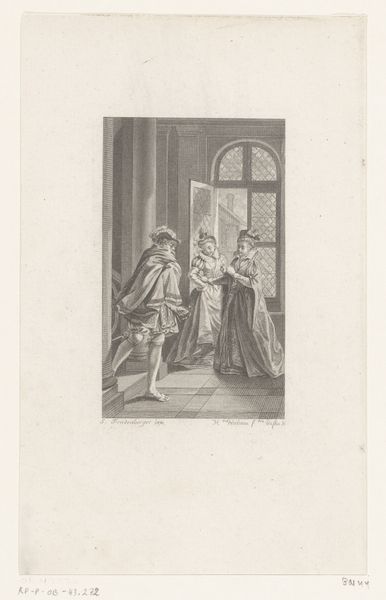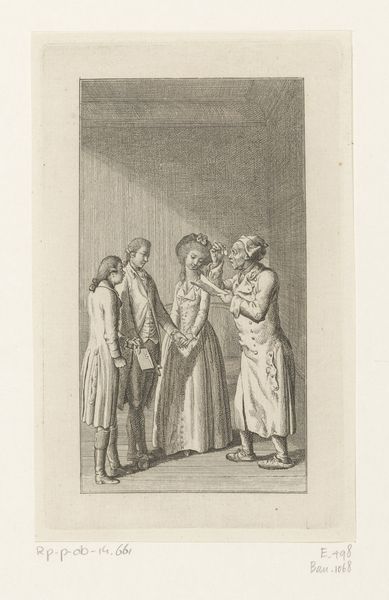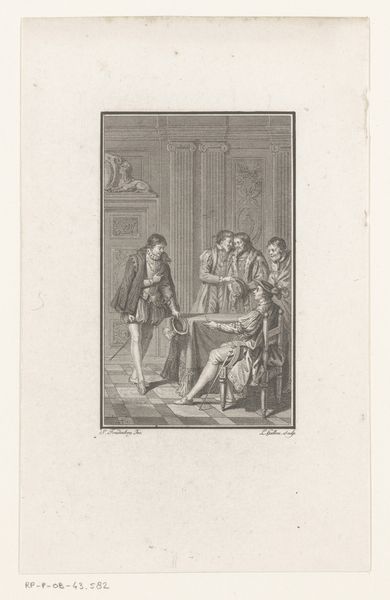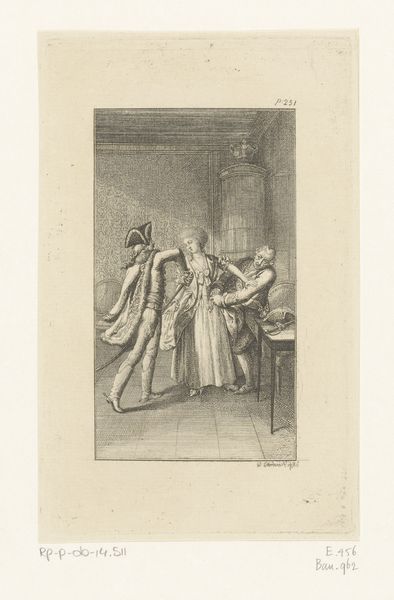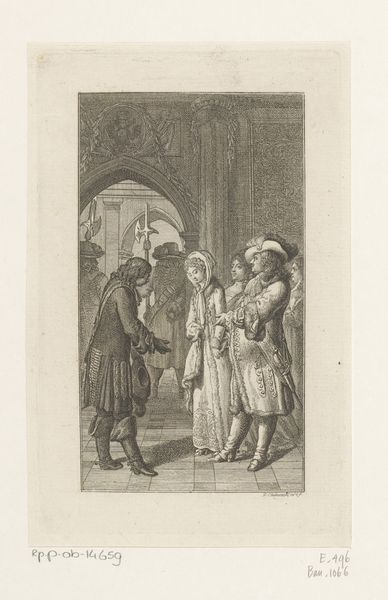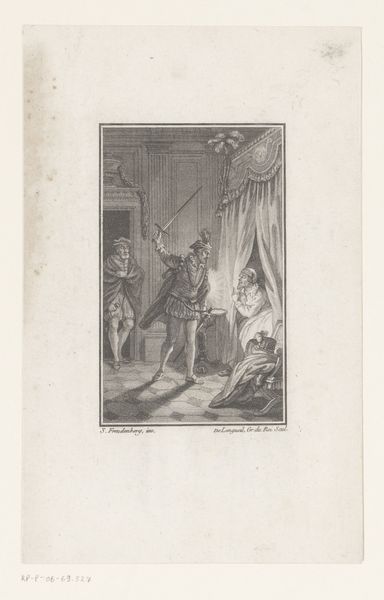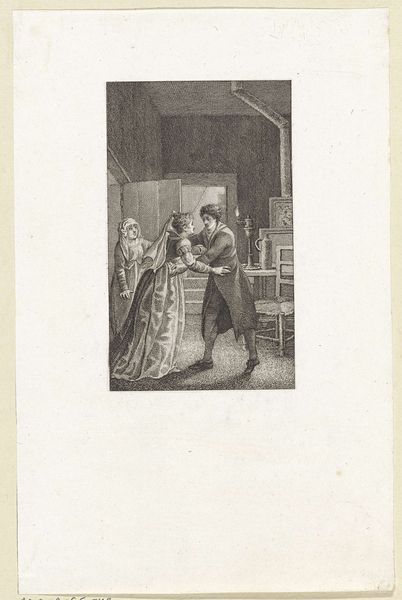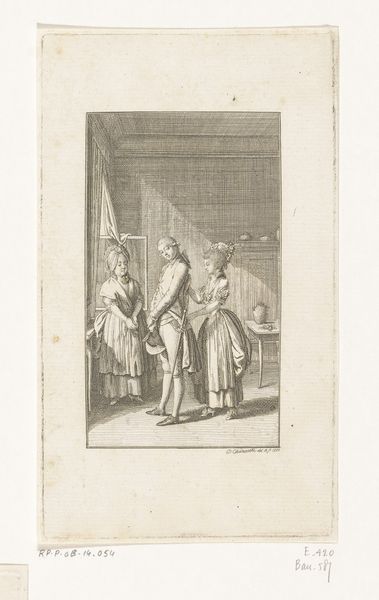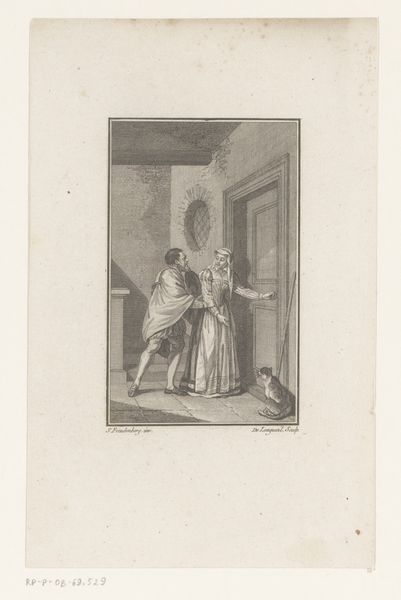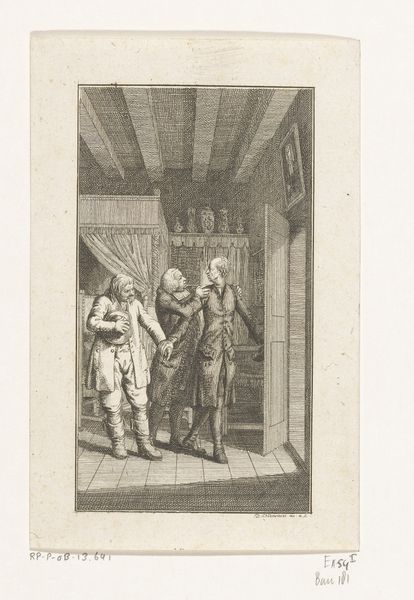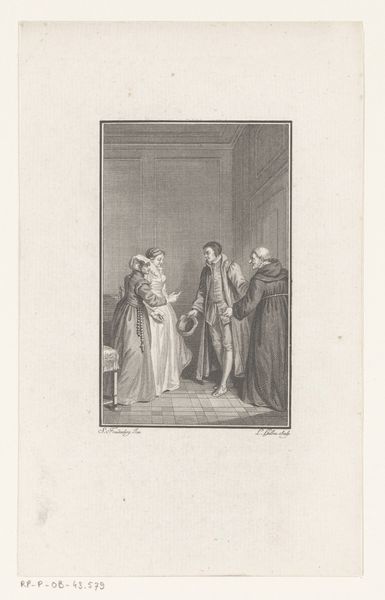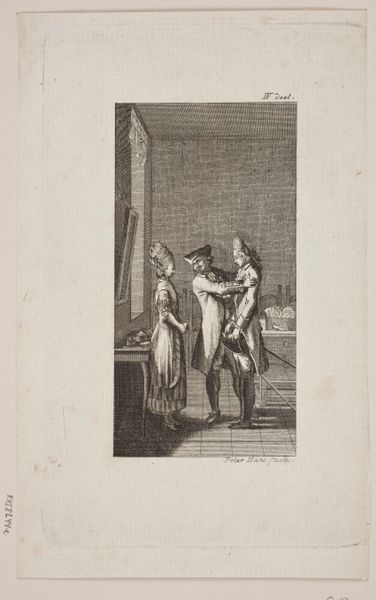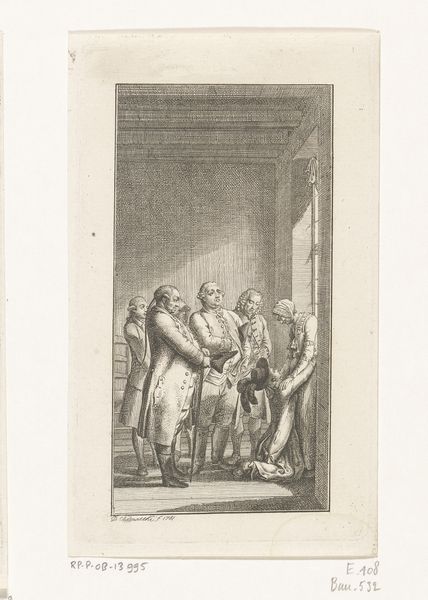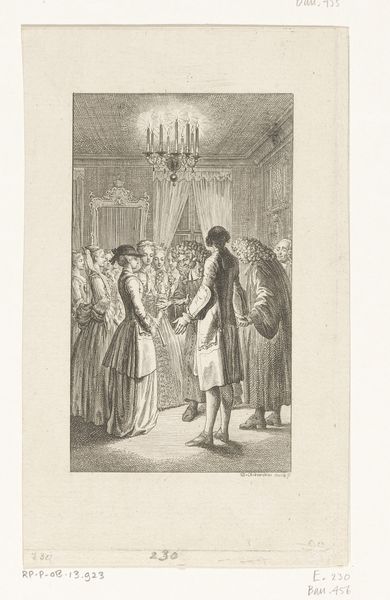
Dimensions: height 143 mm, width 85 mm
Copyright: Rijks Museum: Open Domain
Curator: Welcome! We are standing before "Carl Ferdiner trekt zijn zwaard," an engraving crafted by Daniel Nikolaus Chodowiecki in 1779. The Rijksmuseum proudly holds this historical genre scene. What’s your first impression? Editor: Immediately, I'm struck by the tension captured in such fine detail. It’s as if a stage play is unfolding, the rigid figures caught mid-gesture within the confines of their opulent interior. There is a theatrical and discomforting vibe in such confined settings and their restricted actions. Curator: Indeed! Chodowiecki masterfully uses line and shading. The image depicts a moment of defiance or challenge—with historical relevance, as history painting, that also showcases daily-life moments or observations with touches of Baroque styling through the attitudes and compositions of the subjects. The scene seems pregnant with unspoken drama. Editor: The woman attempting to halt Carl Ferdinand is interesting, it shows a power dynamic where social and power positions and challenges seem a major part of the plot line—maybe more so than violence, which is very subtle or restrained. Do you think this reveals the complexities of aristocratic life at the time? Curator: Absolutely. The act of drawing a sword would have held serious social consequences. This isn't merely about personal anger; it's about honor, status, and the rigid rules governing aristocratic conduct. By intervening, the women also engage and expose what at that moment must have been accepted for their societal role. Editor: And that baroque ornamental setting suggests a world defined by ritual and spectacle, reinforcing the performance of identity within these circles. It adds layers of interpretation, from the gender roles involved in conflict situations to historical reflections and symbolic statements of the piece. Curator: Precisely. The engraving is, therefore, more than just a snapshot of a historical event or a common everyday life; it is a complex commentary on social structures and their limitations in Baroque aristocracy. The setting plays a major part there too. Editor: Thanks! These reflections have shifted my understanding of the piece into more thought-provoking concepts—a space for discussions in modern cultural theory—away from mere illustration or surface analysis of "genre". Curator: It is our pleasure! Let us move on to another room now.
Comments
No comments
Be the first to comment and join the conversation on the ultimate creative platform.
